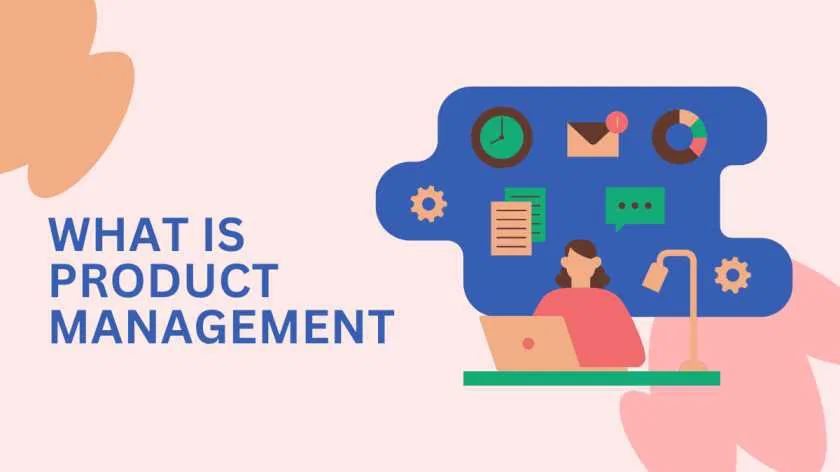
In today’s competitive market, businesses must deliver products that meet customer needs, stand out from the competition, and generate revenue efficiently. Product management is the discipline that bridges business, technology, and user experience to ensure a product’s success throughout its lifecycle.
This guide explores what product management is, the roles and responsibilities of a product manager, key processes, strategies, benefits, challenges, and best practices, providing a roadmap for building and managing successful products.
Table of Content
Understanding Product Management
Product management (PM) is the process of guiding a product from ideation to market launch and beyond, ensuring it delivers value to both customers and the business.
A product manager (PM) acts as the CEO of the product, making decisions about features, priorities, market positioning, and strategy while collaborating with cross-functional teams, including engineering, design, marketing, and sales.
Key objectives of product management include:
- Understanding customer needs and market opportunities
- Prioritizing features and product improvements
- Aligning product development with business goals
- Driving product adoption, satisfaction, and revenue growth
In essence, product management is about delivering the right product, to the right audience, at the right time.
Why Product Management Matters
- Customer-Centric Approach: Ensures products meet real user needs.
- Efficient Resource Allocation: Focuses efforts on features that create maximum value.
- Business Alignment: Connects product strategy with overall business objectives.
- Innovation and Growth: Identifies new opportunities and drives competitive advantage.
- Market Success: Reduces the risk of product failure and enhances market adoption.
- Cross-Functional Collaboration: Fosters communication between teams to build cohesive products.
Strong product management is a critical factor in a company’s ability to innovate and grow sustainably.
Core Responsibilities of a Product Manager
A product manager is responsible for the entire product lifecycle, from conception to retirement:
- Market Research and Customer Insights
- Analyze market trends, competitor offerings, and customer feedback.
- Identify unmet needs and potential opportunities.
- Product Strategy
- Define vision, goals, and roadmap.
- Align product strategy with business objectives.
- Prioritization and Planning
- Decide which features to build and when.
- Balance trade-offs between time, cost, and scope.
- Cross-Functional Leadership
- Collaborate with engineering, design, marketing, and sales teams.
- Ensure everyone understands product goals and priorities.
- Product Development
- Oversee development, testing, and iteration.
- Ensure product meets quality standards and customer expectations.
- Launch and Go-to-Market
- Plan product launches, marketing campaigns, and sales enablement.
- Monitor adoption and gather user feedback for improvements.
- Performance Monitoring
- Track KPIs like user engagement, revenue, churn, and NPS.
- Continuously iterate to improve product performance.
- Related Articles to Explore
- Product management intersects with multiple aspects of business, operations, and strategy. Explore these guides for a deeper understanding:
- What Is Business Management? – Learn how effective management principles guide product strategy and organizational success.
- What Is Operations Management? – Understand how operational efficiency supports product development and delivery.
- What Is Supply Chain Management? – See how coordinating logistics and suppliers impacts product availability and quality.
- What Is Risk Management? – Discover how identifying and mitigating risks ensures successful product launches.
- What Is Project Management? – Explore how project management techniques help bring products from concept to market efficiently.
- What is agile project management? – Learn how agile methods improve product team collaboration and delivery speed.
The Product Management Process
Effective product management follows a structured lifecycle approach:

1. Ideation
- Generate ideas based on customer insights, market gaps, or internal innovation.
- Evaluate feasibility, potential impact, and alignment with strategy.
2. Research and Validation
- Conduct market research, surveys, and interviews.
- Validate product concepts with prototypes or MVPs (Minimum Viable Products).
3. Product Planning and Roadmap
- Define features, priorities, and timelines.
- Communicate the product roadmap to stakeholders.
4. Development
- Collaborate with engineering and design teams to build the product.
- Use agile methodologies to iterate quickly and respond to feedback.
5. Launch
- Prepare marketing, sales, and support teams for go-to-market.
- Release the product to users and monitor adoption.
6. Post-Launch Optimization
- Gather analytics and customer feedback.
- Implement improvements and plan next iterations.
7. Retirement or Transition
- Decide when to phase out a product or pivot strategy.
- Ensure smooth transition for customers and stakeholders.
Key Skills for Product Managers
Product managers require a diverse skill set to succeed:
- Analytical Skills: Evaluate data, KPIs, and market trends.
- Communication: Articulate vision, requirements, and feedback clearly.
- Leadership: Influence teams without direct authority.
- Customer Empathy: Understand and prioritize user needs.
- Strategic Thinking: Align product initiatives with business goals.
- Technical Knowledge: Collaborate effectively with development teams.
- Project Management: Ensure timely delivery within budget and scope.
Strong PMs balance business, user experience, and technical considerations to deliver impactful products.
Product Management Methodologies
Product managers often use structured approaches to guide product development:
- Agile
- Iterative approach with sprints, stand-ups, and continuous feedback.
- Focuses on flexibility and rapid adaptation.
- Scrum
- Agile framework with defined roles (Scrum Master, Product Owner) and ceremonies.
- Encourages collaboration, accountability, and incremental delivery.
- Kanban
- Visual workflow management to track progress and optimize efficiency.
- Lean Product Management
- Minimizes waste, validates assumptions quickly, and emphasizes MVPs.
- Stage-Gate Process
- Structured approach with predefined stages and decision points for development.
Choosing the right methodology depends on team size, product type, and organizational goals.
Benefits of Product Management

- Customer Satisfaction: Products better meet user needs.
- Reduced Risk of Failure: Data-driven decisions minimize market missteps.
- Faster Time-to-Market: Efficient prioritization and agile development.
- Aligned Teams: Ensures engineering, design, marketing, and sales work cohesively.
- Revenue Growth: Focus on high-value features and opportunities.
- Continuous Improvement: Feedback loops drive product optimization.
Organizations with strong product management outperform competitors in innovation, customer loyalty, and market success.
Challenges in Product Management
- Conflicting priorities across departments
- Limited resources and tight budgets
- Rapidly changing customer expectations
- Market uncertainty and competition
- Balancing short-term results with long-term vision
- Managing technical complexity without overburdening development
Overcoming these challenges requires effective communication, data-driven decision-making, and adaptability.
Real-World Examples of Product Management
- Apple iPhone: Iterative product releases based on user feedback and market trends.
- Netflix: Product managers analyze viewing data to optimize content recommendations.
- Airbnb: Continuous experimentation with features to improve booking experience.
- Spotify: Uses data and agile processes to deliver personalized music experiences.
- Tesla: Product managers balance engineering innovation with customer expectations for electric vehicles.
These examples illustrate how product management drives innovation, customer satisfaction, and business growth.
Future Trends in Product Management
- Data-Driven Decision Making: Leveraging analytics for product planning and optimization.
- AI and Automation: Using AI tools for predictive insights and personalized experiences.
- Remote Collaboration: Managing distributed teams effectively for global product launches.
- Customer-Centric Innovation: Increasing focus on user feedback and experience.
- Sustainability Considerations: Designing products with environmental and social impact in mind.
The future emphasizes strategic, innovative, and user-focused product management practices.
Conclusion
Product management is a critical discipline that ensures products succeed in the market by balancing business goals, customer needs, and technical feasibility. Through structured processes, cross-functional collaboration, and continuous iteration, product managers deliver products that create value, drive revenue, and enhance customer satisfaction.
Mastering product management is essential for businesses seeking innovation, growth, and long-term success, and for professionals looking to excel in this dynamic and rewarding field.


